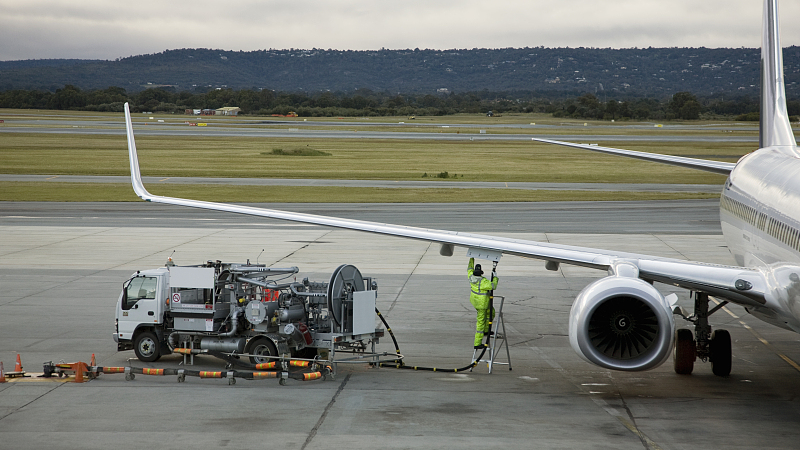Editor's note: Dr. Yousef Alshammari, a former research fellow at the Organization of Petroleum Exporting Countries (OPEC), is the CEO and head of oil research at CMarkits, London, UK. The article reflects the author's opinions, and not necessarily the views of CGTN.
Oil prices have been on a rebound since last week, after a price decline on resumption of Libyan supplies. Supportive factors included supply disruption from Beta hurricane, bullish stock figures announced by the U.S. Energy Information Administration (EIA), and supply disruption concerns following protests in southern Iraq.
Furthermore, supply from Norway is experiencing uncertainty as prospects of a labor strike is expected in the country on September 30 which may affect 900,000 barrels per day of crude oil supply.
The current military conflict between Azerbaijan and Armenia has been another factor in supporting prices. Azerbaijan is a major member of the OPEC+ group producing more than half a million barrels of crude oil a day.
It was observed that money managers increased their net long positions in Brent contracts and WTI contracts last week. This bulk of buying activity is expected to have been influenced by warnings of Saudi Arabia's energy minister against short selling of crude oil contracts at the last OPEC+ press conference.
Bullish data from the EIA provides support
Demand data are improving in the United States. Last week, the EIA reported a withdrawal in crude oil inventories, standing at 494.4 million barrels.
Inventories are still significantly above their pre-COVID-19 level last year by around 74 million barrels. The decline in crude stocks was combined with a decline in gasoline and middle distillates inventories and a decline in the U.S. oil production. The EIA data has provided the markets with some support so far.
A partial decline in crude oil prices was observed this week, as the markets expect bearish data from the American Petroleum Institute (API). The reported withdrawal in gasoline inventories points towards an uptick in demand for the transportation fuel which has been a factor in supporting prices.
On the other hand, gasoline demand in the U.S. has remained below its pre-crisis levels at an average of 8.5 million barrels per day over the past four weeks, which is 9 percent below its level a year ago.
The EIA data clearly shows that withdrawal in the crude oil stocks is slowing as driving season has ended despite approaching the winter heating fuel demand.
Low jet-fuel demand and resurgence of COVID-19
Sideways trends were also observed on the price movement last week, which suggests that the market continues to be pressured by a strengthening U.S. dollar index and the rising number of COVID-19 cases, which have dampened traders' spirit because of the sluggish demand concerns.

An airplane waiting to be fueled. /VCG
An airplane waiting to be fueled. /VCG
The negative demand sentiment is currently amplified by low demand for jet fuel and the resurgence of COVID-19 cases in Europe, bringing back lockdown measures especially in the UK and France. This gives clear indications that the path to recovery may take longer than previously thought.
For instance, China's jet fuel exports in August extended downtrend to hit around 73,300 barrels per day, which is the lowest since February 2011. According to Unipec, China's jet fuel demand from domestic flights has recovered to around 90 percent of the pre-crisis levels while demand from international flights is only 10 percent of the pre-crisis levels.
Meanwhile, blending jet fuel with other transport fuels and cutting refinery runs may be the only way to support weak and negative refining margins and minimize economic losses.
Market reaction to Libyan supplies better than expected
Following resumption, Libyan supplies total 300,000 barrels per day. However, the market reaction to the return of Libyan supplies has been much better than anticipated.
One major factor the market is also factoring in is the sustainability of Libyan production which will largely depend on the deal of sharing revenues between different Libyan parties.
Adding to the bearish sentiment, the number of oil rigs in the U.S. increased to 184, yet as the current price environment remains relatively bearish, the number of oil rigs is not expected to increase significantly for the rest of 2020.
(If you want to contribute and have specific expertise, please contact us at opinions@cgtn.com.)